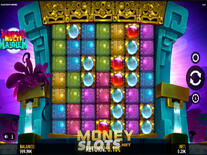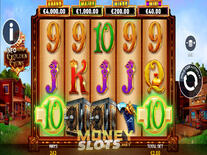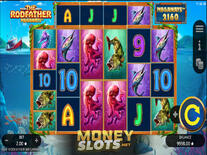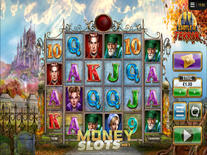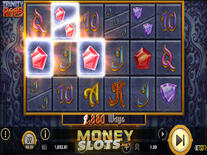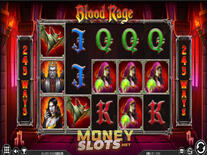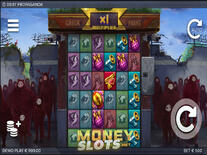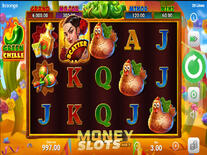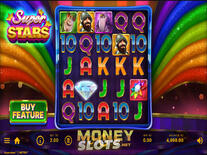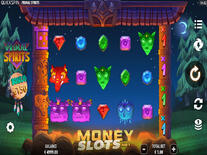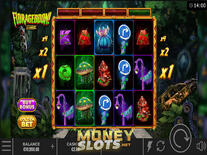

Casino in Deauville.
There are no more than a dozen casinos in the global gaming industry, which are past hundred years. This casino, opened in 1864 in the small resort town of Deauville in northern France by Charles Duke de Morny, half-brother of Napoleon III, this casino has become the center of attraction of the French aristocracy. After one and a half century, it is still popular with the wealthiest people.
In 1850 the Duke de Morny came to the town called Trouville on the Normandy coast of the Channel. His physician Doctor Olive has a villa at Trouville, so he recommended him that place. The doctor was a versatile person and besides his medical practice he was engaged in gambling: in the town he opened a small casino. Although it wasn’t very popular: at Trouville lived poor ignorant fishermen and the wealthy bourgeoisie not very often visited this back-water.
The arrival of the Duke to Trouville was a significant event. He liked the town, but he liked more the neighbor Deauville, which was situated in a five minute walk along the bridge over the Touques River. This is not surprising. The popular in those days joke quite exactly describes the differences between these two towns: the rich bourgeois kept their wives in Deauville and their mistresses in Trouville.
De Morny was fascinated by the quiet streets of Deauville, by well-groomed gardens and the deserted beach. Without pausing to think, the Duke who was famous for his energy and enterprise, decided to found in Deauville a seaside resort. He bought 2.5 square km. of coastal lands and immediately took up to equip them with the necessary facilities. The money for the resort’s building was given to the Duke by a close friend and relative (the husband of Princess Mathilde Bonaparte, Leticia) Anatole Demidoff, a Parisian banker and patronage, the prince of San Donato, the former ambassador of the Russian Empire in France.
By the early 1860s the resort was almost built. De Morny took care of the publicity. He managed to convince the French aristocracy that staying on the Normandy coast is exceptionally good for health. The visits of his half-brother Napoleon III, of members of the Imperial Court and of the wealthiest members of bourgeoisie rose to the skies demand for land lots of Deauville, especially in 1863 when the railway was built there. That time, it took just six hours to get there from Paris. The land lots began to sell well and aristocrats built in Deauville luxurious villas and palaces.
But only seaside resort wasn’t enough. The Duke, being a gambler, decided that wealthy people need an appropriate leisure – a casino. The opening of the first casino in Deauville was held on July 15, 1864.
However, after a few months after the opening De Morny died, and the resort little by little fell into a stage of neglect – in 1885 the casino was closed, and in 1892 the building in which it was located, was demolished.
At the beginning of the XX century the casino of Trouville was popular. It brought a lot of money into the budget of the municipality (and, by the way, it still works).
At that time, Desire Le Hoc was the Deauville’s mayor. He was cunning and ambitious and he quickly realized that the opening of a casino in Deauville would be a very profitable affair. Without pausing to think, he enticed the director of Casino of Trouville Eugene Kornyushe. Then was started a new phase of history of gambling in Deauville.
Mr. Kornyushe began his career with the unenviable position of a dishwasher in a modest Parisian cafe; nevertheless soon he got settled as a manager in a small restaurant on Royale street, which was opened by former garcon Maxim Gaillard in 1893. Several years later the Maxim’s restaurant become the most famous one in Paris.
However Kornyushe craved for new achievements and by the beginning of the 1910s he was at Trouville. He liked the proposal of Desire Le Hoc to become the director of casino in Deauville and Kornyushe accepted it. In 1912 new casino was finally opened. It was so timely, and the casino was so luxurious that the Parisian beau monde immediately occupied all the houses in the neighborhood.
Shrewd Kornyushe counted on French snobbery and he was right. “I want to see there only beau monde. Tell everyone that it’s expensive. Very expensive. I want nobody could cough there without paying sou for it,” – said the casino’s director.
Two years later, in the city there were two luxury hotels – “La Normandie” and “Le Royal”. Le Hoc and Le Kornyushe triumphed: there wasn’t end of the tourists.
The casino not just recovered the Deauville’s status of one of the best resorts for aristocratic, but it also attracted Parisian bohemians. It frequently was visited by Andre Citroen, the founder of automobile empire and by the members of the Rothschild family. Coco Chanel opened here one of her first boutique. In Deauville settled a Russian princess of the Romanov family Natalie Paley, who worked as a model at the famous then fashion house of Lucien Lelong. The King of Spain Alfonso XIII also came to Deauville to play in casino.
In 1924 Kornyushe was replaced by a new manager Francois Andre, who also had started his career at the bottom – he was an employee in an undertaker’s office. He raised the bar on luxury of elite casino. “Have you brought a tuxedo?” – that was the first question that Andre asked a new gambler. The guests without a tuxedo politely were sawn off to the nearest boutique.
The hotel “Du Golf” was built under the guidance of Francois Andre and then there were equipped golf courses, the fame of which spread throughout Europe.
However, the global financial crisis in 1930s and then the second world war stopped the development of the resort for decades. Its restoration was worth a fortune. In the postwar years the casino of Deauville still remained being a meeting place for the royal families, for the French and British toffs and for the world’s richest people. Deauville has become “a symbol of French elegance” again, which he had once thought of the Duke de Morny.
The Deauville’s games.
Nowadays Deauville is still one of the most expensive and prestigious resorts in France. Everything corresponds here to the principle of restrained elegance, which was proclaimed by the Duke de Morny. There are not striking and annoying neon signs like in Las Vegas or Macau. Here people prefer to lose their money safely and with dignity. Most of the visitors of the casino are elderly French and British millionaires.
The building of the casino is magnificent white palace surrounded by park and it is a stone’s throw from the beach. The interior is made in the tradition of Empire: marble floors covered with the carpets in the galleries, stairs with patterned metal banisters, antique columns and crystal chandeliers. The warm shades of yellow and red are prevailing there, and in the gambling rooms there is pattern on the walls of emerald color. The soft light is flowing from under the ruddy light shades. The gambling tables are covered with scarlet baize instead of green one and the dealers with indifferent face are sitting at the table instead of standing.
There are 24 gambling tables in the casino – 4 are for French Roulette, the same number are for English Roulette and for the Stud poker, 10 tables are for black jack , one is for the Punto Banco and the last one is for Craps. The minimum bet at roulette is € 1. There are respectable gentlemen in expensive suits sitting at the table and they make their bets unhurriedly. You can enter the casino just only if you have an identity document and after your registration. Bull is out of the rules because of low bets. Bull (it is a variation of Roulette) has appeared in European casinos in the XVIII century. Now this game is popular mainly in French, Swiss and Spanish casino. As in roulette, the wheel with the rim with numbered pockets on it. The ball funs on the edge of the wheel. The main difference between Bull and Roulette is that in Bull just the ball moves and the wheel is motionless.
There are 325 slots in the room of slot machines. Moreover, you can find there the old IGT and the Bally, and quite prehistoric the Draw-poker and the Joker-poker. However, the great part is occupied by slot machines or “one-armed bandits”. They are mainly occupied by the old ladies with white curls and diamond necklaces and gold rings on each finger who fed machine with tokens. The story of that lucky one who won € 200 thousands, doesn’t let some of them sleep peacefully.
Each September in Deauville it’s a real tourist boom. The gamblers line up to the slots and to the roulette tables. There are no free rooms in the hotel. And it isn’t because of the early velvet season. The point is that since 1975 the festival of American cinema takes place in Deauville, which attracts Hollywood stars like Brad Pitt and Angelina Jolie and Michael Douglas and Catherine Zeta-Jones (they met on the Deauville beach). Some of the suits in the hotel “La Normandie” are named in honor of famous guests, for example, Elizabeth Taylor, Tony Curtis, Robert De Niro, Tom Cruise, Antonio Banderas and Kevin Costner.
These days, a wooden boardwalk Le Planche in Deauville, as the Promenade de la Croisette in Cannes, crowded with tourists. Like on the famous Hollywood Boulevard, on the boardwalk you can find the names of movie stars ever visited Deauville. And in the evening high society rushes to the casino, where like 100 years ago, roulette spins and millionaires lose their millions.
You might be also be interested in these articles
-
News
- Betsoft Gaming Invites Players to Hit the Halloween Jackpot in a Rags to Witches Adventure
- Yggdrasil and Bang Bang Games Are Ready for Halloween with Jekyllz Wild Ultranudge
- Play’n GO Slays with Latest IP Title, Dio – Killing the Dragon
- Pragmatic Play Revolutionises a Popular Title in John Hunter and the Book of Tut Respin™
- Betsoft Gaming Releases Captain’s Quest Treasure Island
-
Articles
-
Latest Slots Reviews
